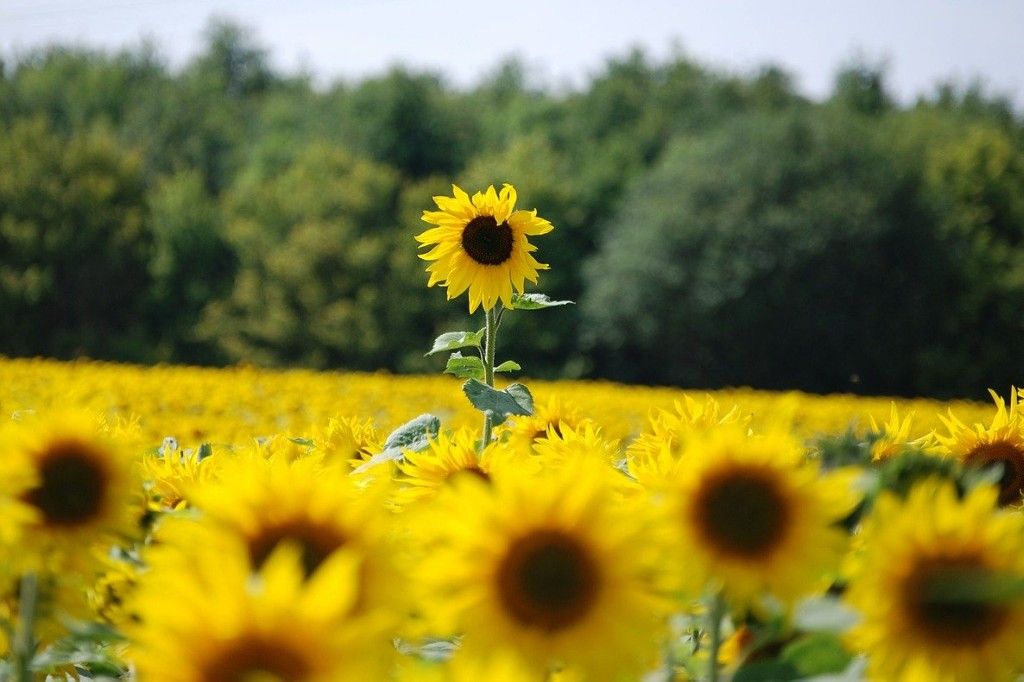The common sunflower goes by the botanical name of Helianthus annus. Extensive breeding has resulted in a great number of cultivars with yellow, orange, red, cream, white, and bi-color blooms, in many different sizes and flower shapes.
The plants can grow 3-10 feet tall and so some need support. They are not temperamental plants, and most are native to Northern Mexico, Canada, and the United States. They are deer resistant and easy to grow and the seeds can be harvested for sowing in subsequent years. Plants are both annual and perennial, but all must have full sun and well-drained soil.
Since their heads are mostly heavy, they prefer a sheltered location or un-staked plants can be easily blown over. Plant seeds 1 inch deep and 12-18 inches apart if they are annuals. Perennial varieties spread by rhizomes so need to be spaced 2-3 feet apart. Fertilizing at planting time helps the roots grow strong, which protects the plants from blowing over.
Some gardeners plant annual sunflowers at two-week intervals from spring to early summer to ensure a succession of blooms. Mulch well to retain moisture and deter weeds. Do not fertilize much, because if the heads get too big, they are likely to break their stems. Divide perennial plants every three years.
Since there are over 70 species, there are many types to choose from and experiment with.
I'm Moya Andrews and today we focused on Helianthus annuus.










